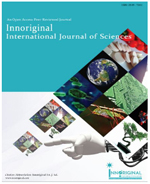PHARMACOSOMES:A NOVEL CARRIER FOR DRUG DELIVERY
Abstract
In the area of solubility enhancement, several problems are encountered. A novel approach based on lipid drug delivery system has evolved, pharmacosomes. Pharmacosomes are colloidal, nanometric size micelles, vesicles or may be in the form of hexagonal assembly of colloidal drug dispersions attached covalently to the phospholipid. They act as a carrier for delivery of drugs quite precisely owing to their unique properties like small size, amphiphilicity, active drug loading, high entrapment efficiency, and stability. They help in controlled release of drug at the site of action as well as in reduction in cost of therapy, drug leakage and toxicity, increased bioavailability of poorly soluble drugs, and restorative effects. There has been advancement in the scope of this delivery system for a number of drugs used for inflammation, heart diseases, cancer, and protein delivery along with a large number of herbal drugs. Hence, pharmacosomes open new challenges and opportunities for improved novel vesicular drug delivery system. In this article the advantages and limitations of pharmacosomes , Preparation methods and their applications has been discussed in detail.Key words:-Â Entrapment efficiency, SEM, Zeta potential, DSCReferences
. Gupta, R. P. Singh, P. Lokwani, S. Yadav, and S. K. Gupta, “Vesicular system as targeted drug delivery system: an overview,†International Journal of Pharmacy and Technology, vol. 3, no. 2, pp. 987–1021, 2011.
R. C. Doijad, D. S. Bhambere, M. V. Fakirappa, and N. V. Deshmukh, “Formulation and characterization of vesicular drug delivery system for anti-HIV drug,†Journal of Global Pharma Technology, vol. 1, no. 1, pp. 94–100, 2009.
M. J. Pozansky and R. L. Juliano, “Biological approaches to the controlled delivery of drugs: a critical review,†Pharmacological Reviews, vol. 36, no. 4, pp. 277–336, 1983.
A. D. Bangham, M. M. Standish, and G. Weissmann, “The action of steroids and streptolysin S on the permeability of phospholipid structures to cations,†Journal of Molecular Biology, vol. 13, no. 1, pp. 253–259, 1965.
U. Ogihara, T. Sasaki, H. Toyama, O. M. Sneha, and H. Nishigori, “Rapid diagnostic imaging of cancer using radiolabeled liposomes,†Cancer Detection and Prevention Journal, vol. 21, pp. 490–496, 1997.
D. Kavitha, J. Naga Sowjanya, and S. Panaganti, “Pharmacosomes: an emerging vesicular system,â€International Journal of Pharmaceutical Sciences Review and Research, vol. 5, no. 3, pp. 168–171, 2010.
S. Biju, S. Talegaonkar, P. Mishra, and R. Khar, “Vesicular systems: an overview,†Indian Journal of Pharmaceutical Sciences, vol. 71, pp. 421–427, 2009.
M. P. Wagh and J. S. Patel, “Biopharmaceutical classification system: scientific basis for biowaiver extensions,†International Journal of Pharmacy and Pharmaceutical Sciences, vol. 2, no. 1, pp. 12–19, 2010.
R. Löbenberg and G. L. Amidon, “Modern bioavailability, bioequivalence and biopharmaceutics classification system. New scientific approaches to international regulatory standards,†European Journal of Pharmaceutics and Biopharmaceutics, vol. 50, no. 1, pp. 3–12, 2000.
J. Varshosaz, R. Talari, S. A. Mostafavi, and A. Nokhodchi, “Dissolution enhancement of gliclazide usingin situ micronization by solvent change method,†Powder Technology, vol. 187, no. 3, pp. 222–230, 2008.
V. E. Ivanov, Y. S. Moshkovskii, and L. M. Raikhman, “Effects of temperature on cascade systems of pharmacosome fusion,†Pharmaceutical Chemistry Journal, vol. 15, no. 9, pp. 619–621, 1981.
M. K. Rawat, A. Jain, and S. Singh, “In vivo and cytotoxicity evaluation of repaglinide-loaded binary solid lipid nanoparticles after oral administration to rats,†Journal of Pharmaceutical Sciences, vol. 100, no. 6, pp. 2406–2417, 2011
N. K. Jain, Advances in Controlled and Novel Drug Delivery, CBS, 2003.
S. Sharma, L. Mishra, I. Grover, A. Gupta, and K. Kaur, “Liposomes: vesicular system an overview,â€International Journal of Pharmacy and Pharmaceutical Sciences, vol. 2, no. 4, pp. 15–21, 2010.
A. Semalty, M. Semalty, B. S. Rawat, D. Singh, and M. S. M. Rawat, “Pharmacosomes: the lipid-based new drug delivery system,†Expert Opinion on Drug Delivery, vol. 6, no. 6, pp. 599–612, 2009.
A. Semalty, M. Semalty, B. S. Rawat, D. Singh, and M. S. M. Rawat, “Development and evaluation of pharmacosomes of aceclofenac,†Indian Journal of Pharmaceutical Sciences, vol. 72, no. 5, pp. 576–581, 2010.
A. Steve, “Lipophilic drug derivatives for use in liposomes,†US Patent S, 534, 499, (C1 S14-25, A61K31/70), 1996.


